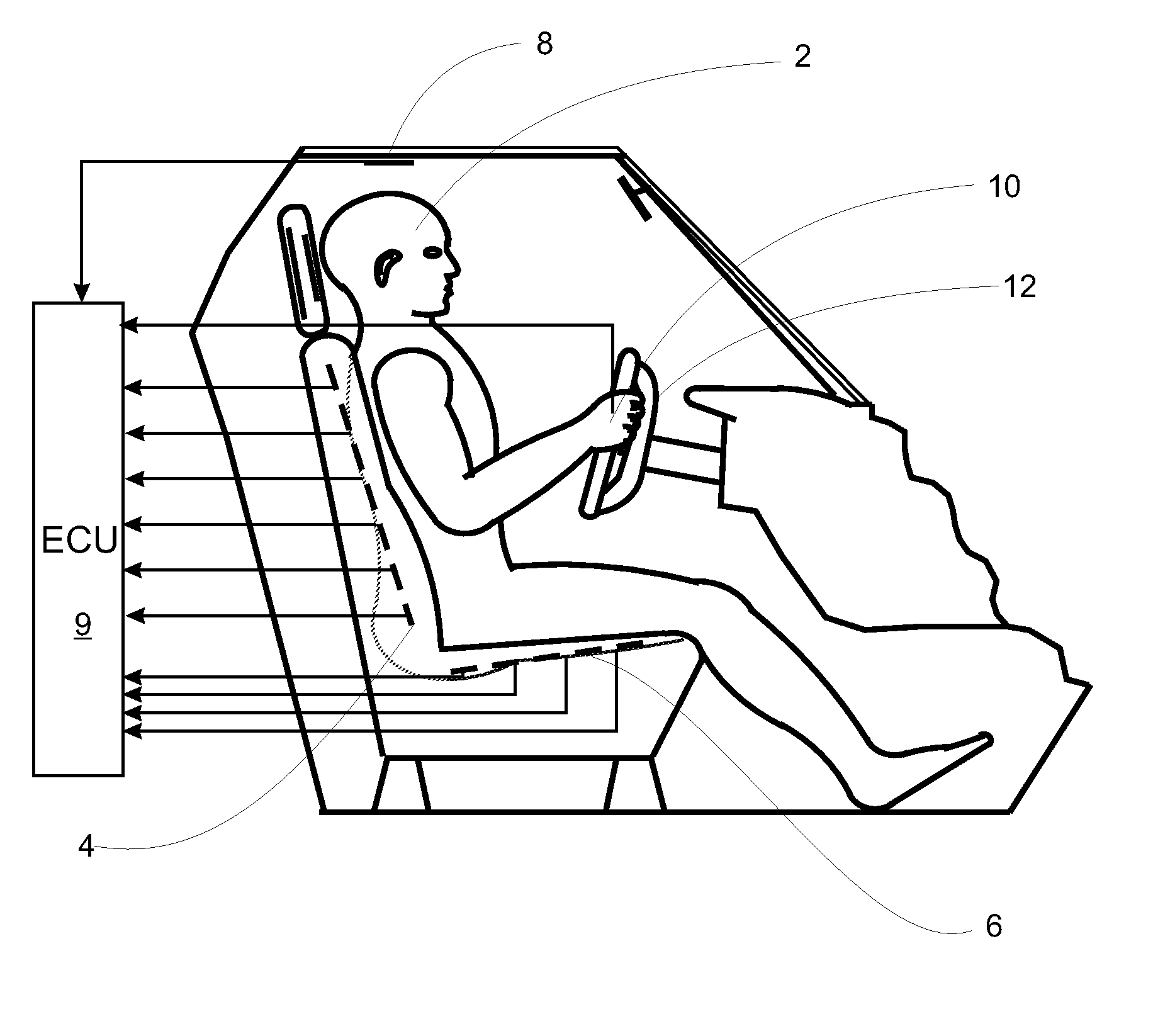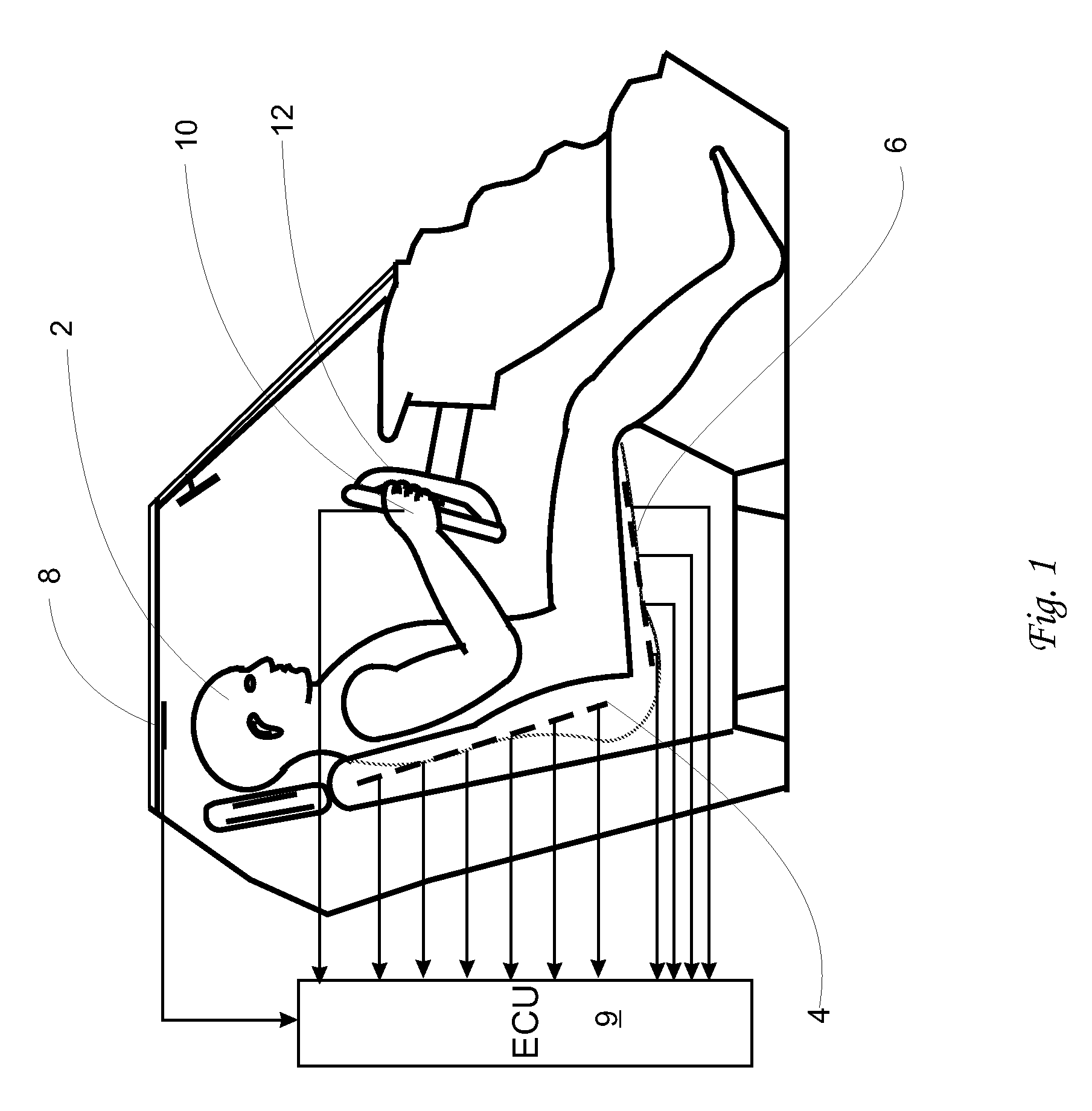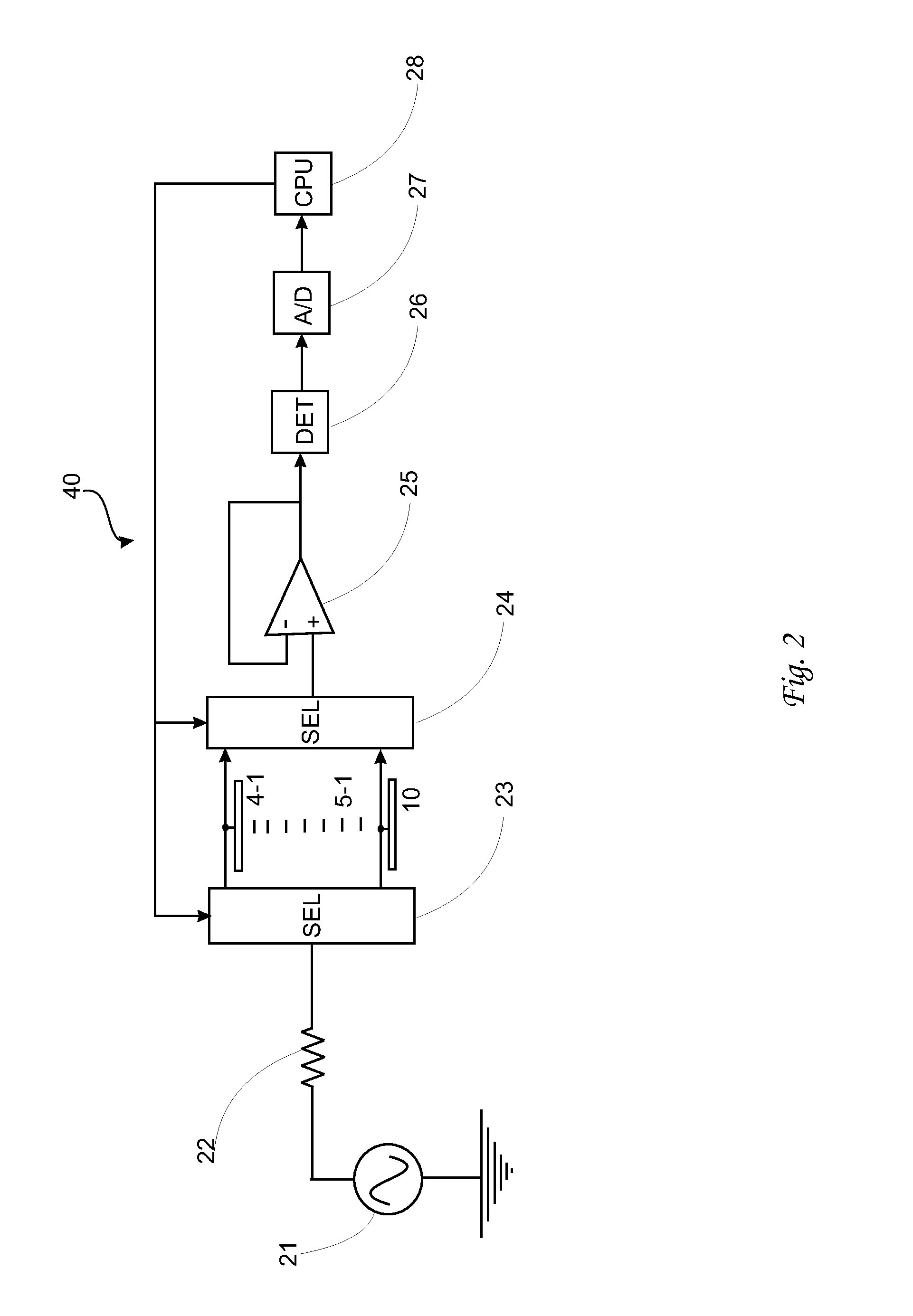Driver health and fatigue monitoring system and method
a monitoring system and driver technology, applied in the direction of diagnostic recording/measuring, process and machine control, instruments, etc., can solve the problems of excessive daytime sleepiness, inattention of drivers, increased risk of motor vehicle collision,
- Summary
- Abstract
- Description
- Claims
- Application Information
AI Technical Summary
Benefits of technology
Problems solved by technology
Method used
Image
Examples
Embodiment Construction
[0079]All patents or literature referred to anywhere in this specification are incorporated by reference in their entirety. Also, although many of the examples below relate to a particular vehicle, an automobile, the invention is not limited to any particular vehicle and is thus applicable to all relevant vehicles including all compartments of a vehicle including, for example, the passenger or other compartment of an automobile, truck, farm tractor, construction machine, train, airplane and boat.
[0080]“Or” and “and” as used in the specification and claims shall be read in the conjunctive and in the disjunctive wherever they appear as necessary to make the text inclusive rather than exclusive, and neither of these words shall be interpreted to limit the scope of the text.
[0081]There is a continuing need to recognize when a driver or machine operator is distracted in order to regain his attention before an accident results from such distraction. Distraction can take many forms as desc...
PUM
 Login to View More
Login to View More Abstract
Description
Claims
Application Information
 Login to View More
Login to View More - R&D
- Intellectual Property
- Life Sciences
- Materials
- Tech Scout
- Unparalleled Data Quality
- Higher Quality Content
- 60% Fewer Hallucinations
Browse by: Latest US Patents, China's latest patents, Technical Efficacy Thesaurus, Application Domain, Technology Topic, Popular Technical Reports.
© 2025 PatSnap. All rights reserved.Legal|Privacy policy|Modern Slavery Act Transparency Statement|Sitemap|About US| Contact US: help@patsnap.com



